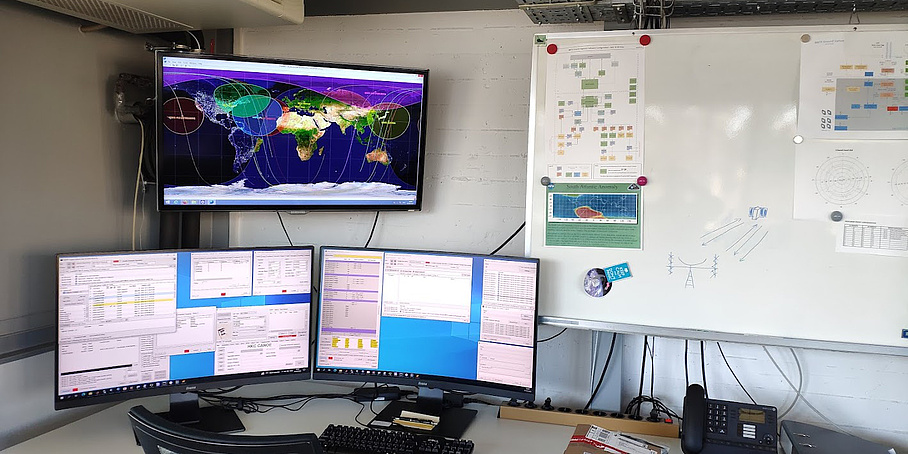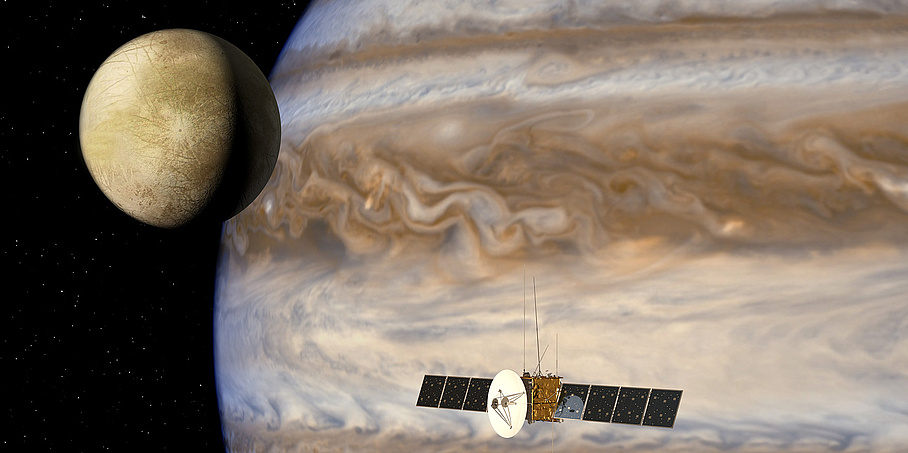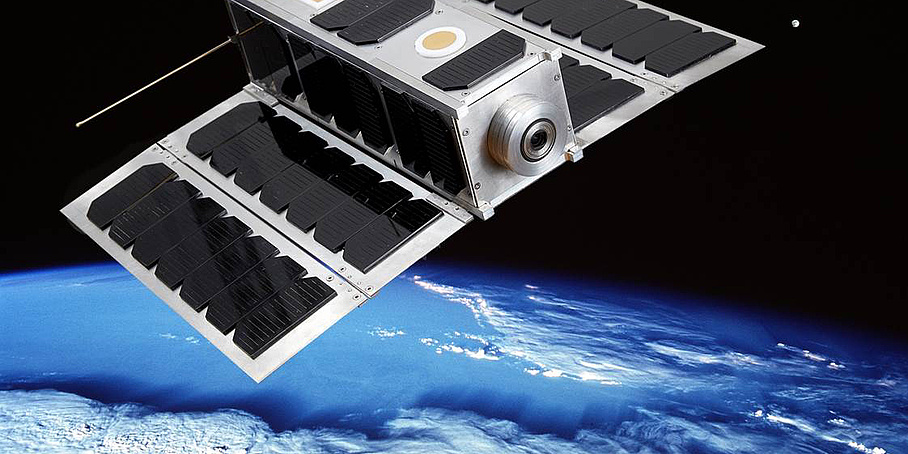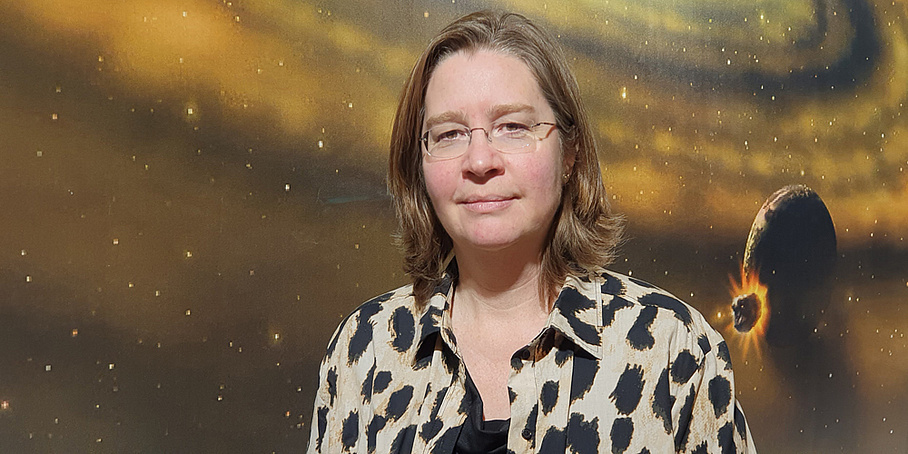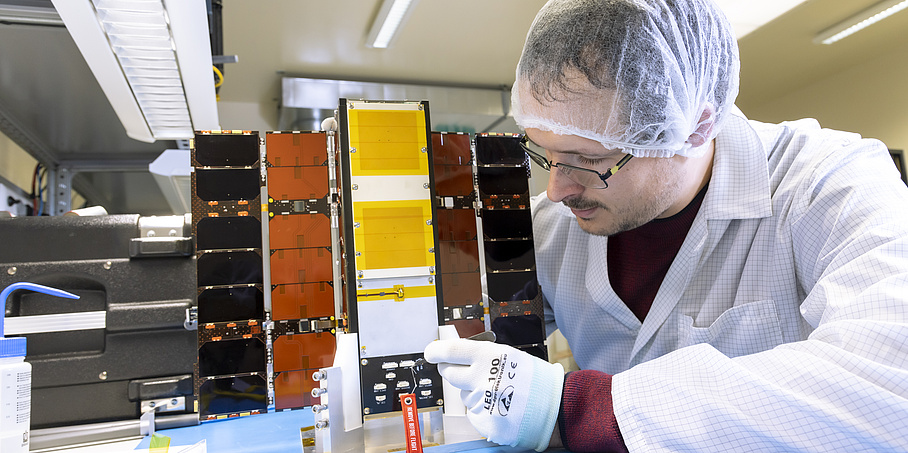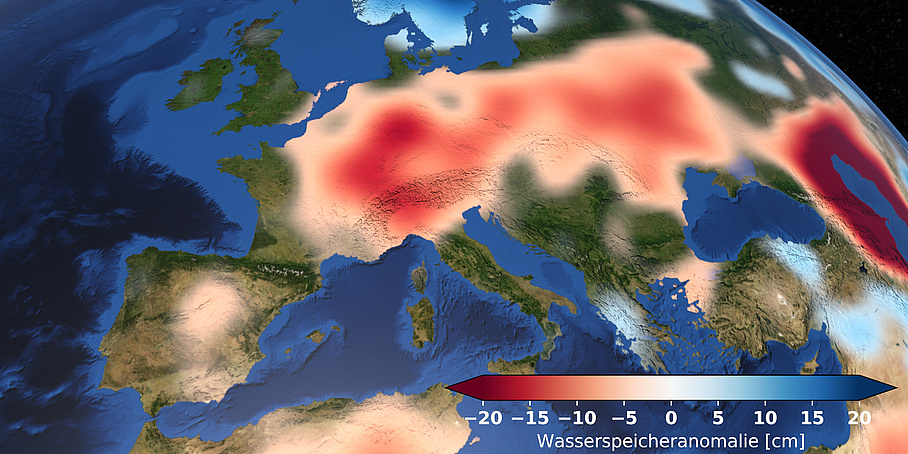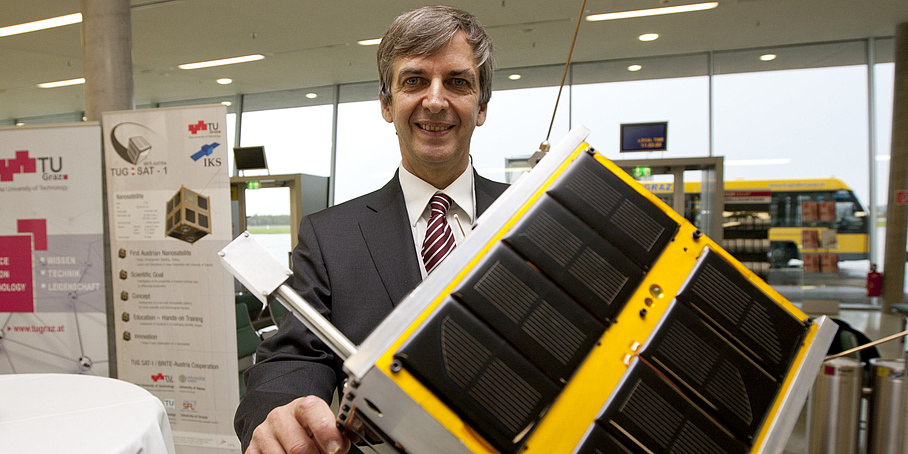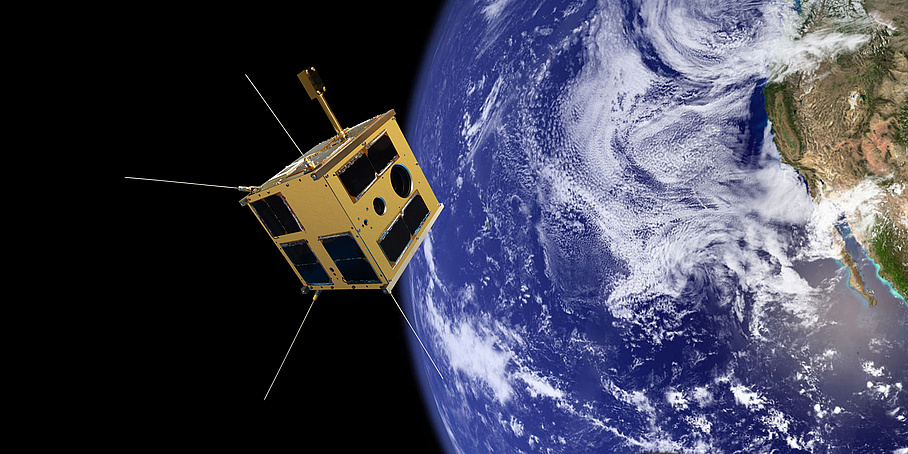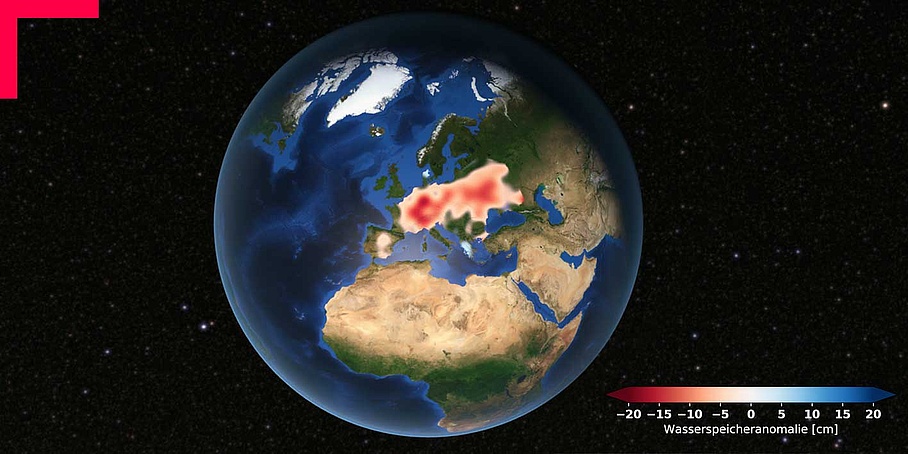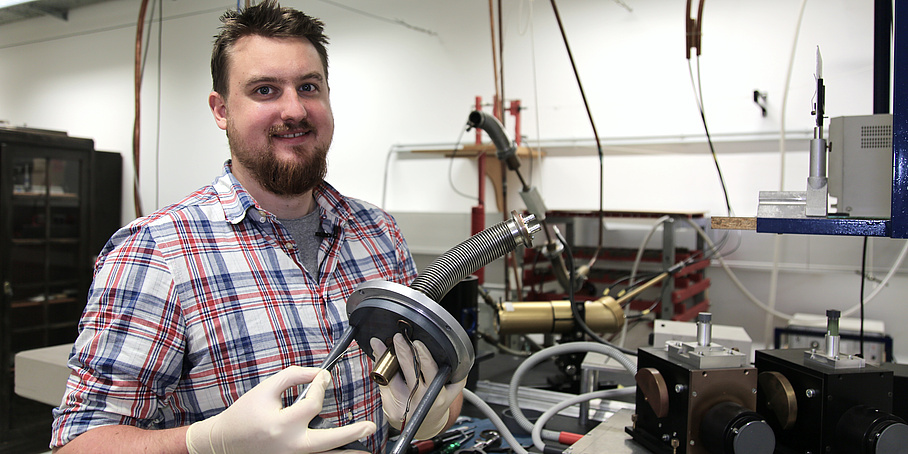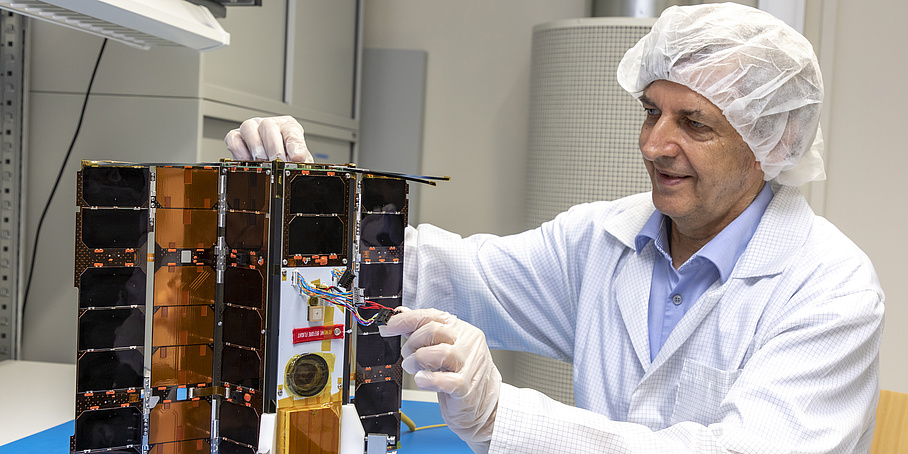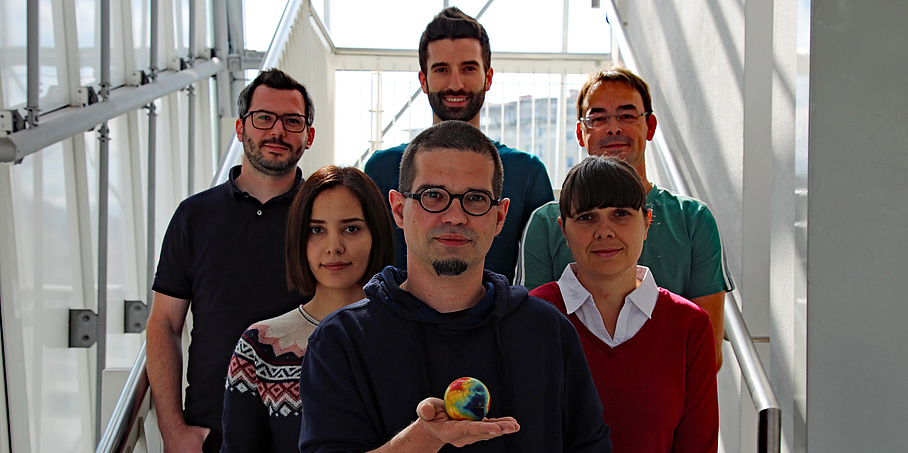The deep expanses of the universe are fascinating. For thousands of years, mankind has been looking up at the night sky, discovering new celestial bodies, distant suns, countless galaxies and ultimately trying to find its own place in the big picture. But the observation of our small, blue rocky planet is also extremely rewarding from space. For example, climate changes can be observed from orbit, the thickness of the ice in the Arctic can be measured and the groundwater level can be monitored. But not only that: satellites in orbit help us in our daily lives - in navigation, for example.
At TU Graz, outer space is comprehensively integrated into research projects and scientific careers. For example, the first Austrian satellite in space, TUGSAT-1, was built and tested at TU Graz, a magnetometer from TU Graz will be used on board the JUICE mission to the icy moons of Jupiter, and TU Graz communicates daily with several satellites in orbit via the ground station at the Inffeldgasse campus.
Where Satellites are Built and Monitored
At TU Graz, satellites are developed, built and supported during their mission. A foray through the ground control and other necessary infrastructure with Manuela Wenger.
Graz Magnetometer Searches for Habitats on Jupiter’s Moons
A scalar magnetometer developed by Roland Lammegger at TU Graz measures the strength of magnetic fields optically. Now it is being sent to Jupiter to explore the water beneath the surfaces of the icy moons.
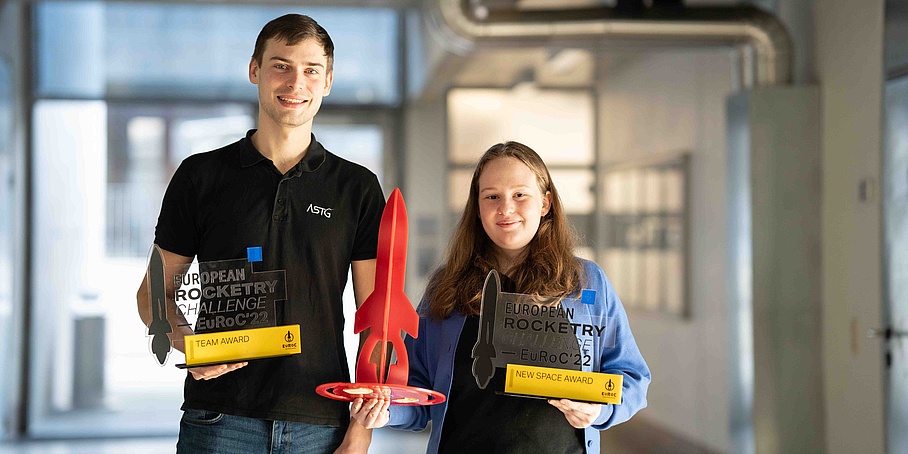
“The most exciting moment was just before the first rocket launch”
Dorothea Krasser is studying physics, and Georg Witzlinger mechanical engineering. In the student team at TU Graz, a rocket is built every year. A conversation about rocket tests, the gruelling 10 seconds before take-off, and the love of the stars..
Between Heavenly Bodies: TU Graz in Space
From the first Austrian in space and the “Ferrari of space” to the icy moons of Jupiter, TU Graz has been an integral part of international space research for years.
How do we explore space?
Astrophysicist Christine Helling tells the science podcast Talk Science to Me how we can explore space.
Ready for Space: PRETTY is Ready to Launch
The Austrian climate observation satellite PRETTY is scheduled for launch in spring 2023 from the spaceport in French Guiana on board a Vega-C rocket.
Satellite Data Shows Sustained Severe Drought in Europe
Europe lacks groundwater – a lot of groundwater. The continent has already been suffering from a severe drought since 2018. This is confirmed by satellite data analysed at the Institute of Geodesy at TU Graz.
A decade in Space: Austria´s First Satellite is Ten Years Old
Developed and built at TU Graz, TUGSAT-1 made Austria into a space nation when it was launched into orbit ten years ago.
Four Years in Space: Austrian BRITE Satellites
TUGSAT-1 and UniBRITE have been in space since 2013. During this time 350 stars have been observed, new variable stars discovered, and 12 scientific papers published in international journals.
Cat Chases Mouse in Space
If the groundwater rises sharply, flooding can be imminent. The Tom and Jerry satellites, chasing each other high above the earth, help make important predictions – including about climate change.
Experimental Physics: Inching Closer to Outer Space
Peter Pichler from TU Graz’s Institute of Experimental Physics is researching liquid metal. At the moment, he is waiting for data from the ISS, which he will analyse in his dissertation.
My Work is Flying Through Space
Did you know that the first Austrian satellite to go into space was built in TU Graz’s labs? TUGSAT-1 has been observing stars for more than six years – and it’s not the only object made in Graz that is hurtling through space.
Seen from Orbit, Everything´s Much More Precise
Torsten Mayer-Gürr surveys the Earth. He may work in an office in Steyrergasse in Graz, but his measuring device flies more than 400 kilometres overhead.
